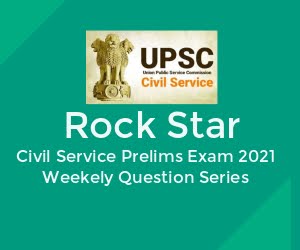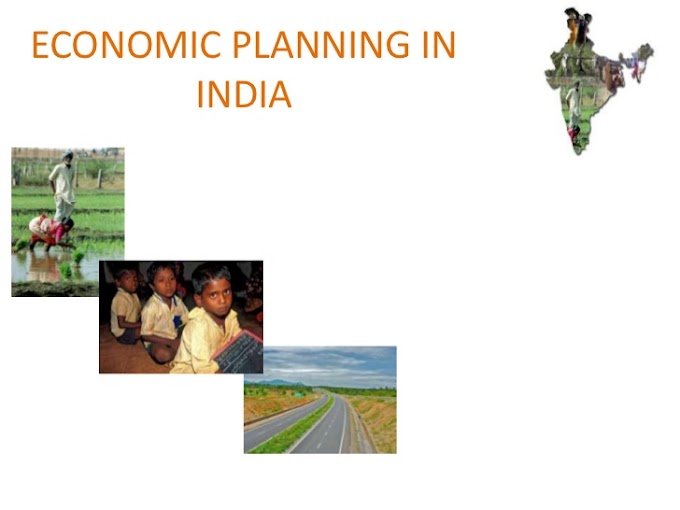Chandragupta Maurya (322 – 297 BC):
- With the help of Chanakya, known as Kautilya or Vishnugupta, he overthrew the Nandas & established the rule of the Maurya dynasty.
- Chandragupta is called Sandrocottus by the Greek scholars.
- Seleucus Necater was one of the generals of Alexander and after his death, had succeeded in gaining control of most of the Asiatic provinces.
- Chandragupta defeated him in 305 BC and was compelled to yield parts of Afghanistan to Chandragupta. There was also a marriage alliance between the two families.
- Built a vast empire, which included not only good portions of Bihar and Bengal, but also western and north western India and the Deccan.
- This account is given by Megasthenes (A Greek ambassador sent by Seleucus to the court of Chandragupta Maurya) in his book Indica. We also get the details from the Arthashastra of Kautilya.
- Chandragupta adopted Jainism and went to Sravanabelagola (near Mysore) with Bhadrabahu, where he died by slow starvation.
- Vishakhadatta wrote a drama Mudrarakshasa (describing Chandragupta’s enemy) & Debi Chandraguptam in sixth century AD.
Bindusara (297 – 273 BC)
- Called Amitraghat by Greek writers.
- Chandragupta was succeeded by his son Bindusara in 297 BC. He is said to have conquered ‘the land between the 2 seas’, i.e., the Arabian Sea & Bay of Bengal. At the time of his death, almost the entire subcontinent came under the Mauryan rule. Greek Ambassador, Deimachos visited his court.
Ashoka (269 – 232 BC)
- Ashoka was appointed the Viceroy of Taxila and Ujjain by his father, Bindusara. He was at Ujjain when Bindusara, died. His formal coronation was delayed for four years, suggesting a disputed succession. A Buddhist literature says that he came to throne after killing his 99 brothers.
- Regarded as one of the greatest kings of all times. He was the first ruler to maintain direct contact with people through his inscription.
- In his inscriptions following languages have been used:
- Brahmi, Kharoshthi, Armaic and Greek. (James Princep first deciphered the inscriptions).
- Ashoka became the Buddhist under Upagupta.
Extent of Empire
His empire covered the whole territory from Hindukush to Bengal & extended over Afghanistan, Baluchistan & whole of India with the exception of a small area in the farthest south. Kashmir and Valleys of Nepal were also included, first empire to do so.
The Kalinga War History : (261 BC, mentioned in XIII rock edict). It changed his attitude towards life. Ashoka became a Buddhist after that.
Aspects of Ashoks’s Reign
- Ashok’s empire was divided into provinces with a viceroy in each province. He established Dhramshalas, hospitals and Sarais throughout his kingdom.
- He appointed Dharma Mahapatras to propagate dharma among various social groups including women.
- He organized a network of missionaries to preach the doctrine both in his kingdom and beyond. He sent them to Ceylon, Burma (sent his son Mahindra & daughter Sanghamitra to Ceylon) and other south-east Asian regions, notably Thailand.
- Ashoka is called ‘Buddhashakya & Ashok’ in Maski edict and ‘Dharmasoka’ in Sarnath inscription. He was also known as ‘Devanampiya’- beloved of the gods, and ‘Piyadassi’- of pleasing appearance.
Significance of Mauryan Rule
- The emblem of the Indian Republic has been adopted from the 4 – lion capital of the Ashokan pillar at Sarnath.
- Gurukuls & Buddhist monasteries developed with royal patronage. Universities of Taxila & Banaras are the gifts of this era.
- Kautilya’s Arthashastra, Bhadrabahu’s Kalpa Sutra, Buddhist texts like the Katha Vatthu & Jain texts such as Bhagwati Sutra, Acharanga Sutra and Dasavakalik comprise some of the important literature of this era.
Fall of Mauryan Empire
- Ashoka’s patronage of Buddhism and his anti-sacrificial attitude is said to have affected the income of the Brahmins. So they developed antipathy against Ashoka.
- Revenue from agrarian areas was not sufficient to maintain such a vast empire as booty from war was negligible.
- Successors of Ashoka were too weak to keep together such a large centralized empire.
Brihadratha
The last Mauryan king Brihadratha was killed by Pushyamitra Shunga (Commander in Chief) in 185 BC, who started the Shunga dynasty in Magadha.
Pandyas :
- Their capital was Madurai.
- First mentioned by Megasthenes, who says that their kingdom was famous for pearls and was ruled by a woman.
- The Pandya kings profited from trade with the Roman Empire and sent embassies to the Roman emperor Augus.
Cholas:
- The kingdom was called Cholamandalam or Coromondal. The chief centre was Uraiyur, a place famous for cotton trade. Capital was Kaveripattanam/Puhar.
- A Chola king named Elara conquered SriLanka & ruled it over for 50 years.
- Karikala was their famous king.
- Main source of wealth was trade in cotton cloth. They also maintained an efficient navy.
Cheras:
- Their capital was Vanji (also called Kerala country).
- It owed its importance to trade with the Romans. The Romans set up two regiments there to protect their interests.
- Fought against the Cholas about 150 AD.
- Greatest king was Senguttuvan, the Red Chera.
Miscellaneous
- All the gathered information is based on Sangam literature. Sangam was a college or assembly of Tamil poets held probably under Royal Patronage (esp. Pandyas)
- Sangam age corresponds to the post-Maurya and the pre-Gupta period.
- Three Sangamas were held. The first Sangam was held at Madurai but its work has not survived. Its chairman was Agastya. The second Sangam was held at Kapatpuram.
- Its chairman was Tolkappiyar (author of Tolkappium). The third Sangam was held at Madurai. Its chairman was Nakkirar. It was the third Sangam from which covers the entire corpus of Sangam literature.
- Silappadikaram by llano Adigal (story of a married couple) and Manimekalai by Sattanar are the famous epics of this time.
- Other books are Tolkappium by Tolkappiyar, Jivikachintamani by Tirutakkdewar and Kural (called the ‘fifth veda’ or ‘the Bible of the Tamil Land’) by Tiruvalluvar.
- The chief local god was Murugan, who was also called Subramaniya.
- ‘Pariyars’ – agricultural laborers who used to work in animal skin.
- Civil and military offices held by vellalas (rich peasants).
- The ruling class was called “Arasar”.
- Captains of the army were given the title ENADI in formal functions.
The Sunga Dynasty
- Pushyamitra founded this dynasty. His dominions extended to South as far as the Narmada River & included cities of Pataliputra, Ayodhya & Vidisha. He performed two Ashwamedha sacrifices. He also defeated the Bactrian king, Dematrius.
- The fifth king was Bhagabhadra, to whose court Heliodoros, the Greek ambassador visited.
- A Shunga king, Agnimitra was the hero of Kalidasa’s Malavikagnimitram.
- They were basically Brahmins. This period saw the revival of Bhagvatism.
- Patanjali’s classic Mahabhashya was written at this time.
The Kanva Dynasty
- The founder of this short-lived dynasty was Vasudeva, who killed the last Sunga king, Devabhuti.
- They were swept away by Satavahanas of the Deccan.
The Chetis of Kalinga
- The Hathigumpha inscription (near Bhubhaneshwar, Orissa) of Kharavela, the third ruler of the dynasty, gives information about the Chetis.
- Kharavela pushed his kingdom beyond the Godavari in the South.
- He was a follower of Jainism and patronized it to a great extent.
The Satavahanas Or The Andhras
- They were the successors of the Mauryans in the Deccan & the central India.
- Simuka is regarded as the founder of this dynasty. The most important king was Gautamiputra Satakarni (AD 106 – 130) who raised the power and prestige of Satavahanas to greater heights. He set up his capital at Paithan on the Godavari in Aurangabad distt.
Important aspects of Satavahanas :
- Mostly issued lead coins (apart from copper and bronze).
- Acted as a bridge between North and South India.
- Satavahanas rulers called themselves Brahmans. Performed Vedic rituals and worshipped gods like Krishna, Vasudeva and others.
- However, they also promoted Buddhism by granting land to the monks.
- The two common religious constructions were the Buddhist temple that was called ‘Chaitya’ & the monasteries, which was called ‘Vihara’. The most famous Chaitya is that of Karle in W. Deccan.
- Their distt was called Ahara’, as it was in Ashoka’s time. Their officials were known as ‘amatyas’ and ‘mahamatras’, as they were known in Mauryan times.
- Started the practice of granting tax free villages to brahmanas & Buddhist monks.
- The official language was Prakrit & the script was Brahmi, as in Ashokan times. One Prakrit text called Gathasattasai is attributed to a Satavahana king called Hala.
Gupta Empire Golden Age of India
On the ruins of the Kushan empire arose a new empire, which established its way over a good part of the former dominions of both Kushans and Satavahanas. The first two kings of the dynasty were Srigupta and Ghatotkacha.
Chandragupta I (AD 319 – 335)
- First important king of Gupta Dynasty.
- Started the Gupta era in 319-320 AD.
- He enhanced his power & prestige by marrying Kumara Devi, princes of the Lichchavi clan of Nepal.
- He acquired the title of Maharajadhiraj.
- Struck coins in the joint names of himself, his queen and the Lachchavi nation, thereby acknowledging his marriage alliance.
Samudragupta (AD 335 – 375)
- The Gupta kingdom was enlarged enormously by Chandragupta’s son & successor Samudragupta.
- His court poet Harisena wrote a glowing account of the military exploits of his patron. In a long inscription at the Prayag Prashasti pillar (at Allahabad), the poet enumerated the people & countries that were conquered by Samudragupta.
- Samudragupta believed in the policy of war and conquest and because of his bravery and generalship he is called the ‘Napoleon’ of India (by the historian V.A. Smith).
- Samudragupta is said to have composed numerous poems of high merit. Some of his coins represent him playing vina. He also performed Asvamedha sacrifice.
- He assumed the titles of Kaviraj and Vikramanka.
- Vasubandhu, a celebrated Buddhist scholar was his minister.
- Though a follower of the brahmanical religion, he was tolerant of other faiths; Received a missionary from Meghavarman, the ruler of SriLanka, seeking his permission to build a Buddhist temple at Gaya, which he granted.
Chandragupta – II (AD 380 – 413)
- Samudragupta was succeeded by Ramgupta but Chandragupta II killed him and married his queen Dhruvadevi.
- He entered into matrimonial alliance with the Nagas (of upper and the Central Provinces) by marrying princess Kubernaga whose daughter Prabhavati was married to Rudrasena-II of the Vakataka family.
- Took the title of Vikramaditya by defeating Rudrasimha III, a Kshatrap king of Ujjain. He also took the title of Simhavikrama.
- He was the first ruler to issue silver coins. Also issued copper coins.
- The iron pillar inscription, fixed near Qutabminar in Delhi mentions a king Chandra (considered by many as Chandragupta II only).
- His court was adorned by celebrated nine gems (navratnas) including Kalidasa, Amarsimha, Varahmihir, and Dhanvantri.
- Chinese pilgrim Fahien visited India at this time.
Kumaragupta – I (AD 413 – 455)
- He adopted the title of Mahendraditya.
- Founded Nalanda University (a renowned university of ancient India).
- He was the worshipper of Lord Kartikeya (son of Lord Shiva).
- In the last years of his reign, the peace and prosperity of the empire was disturbed due to the invasion of Turko-Mongol tribe, Hunas. During the war with the Hunas, Kumaragupta died.
Skandagupta (AD 455 – 467):
- Kumaragupta-I was followed by Skandagupta. He faced Hunas effectively.
- Restored Sudarshana Lake.
- After his death, the great days of the Guptas were over. The empire continued but central control weakened, and local governors became feudatory kings with hereditary rights.
Fall of Gupta Empire:
- The weak successors of Skandagupta could not check the growing Huna power.
- Feudatories rose in Bihar, Bengal, MP, Vallabhi, etc.
- Note: Mihirkula was the most famous Huna king. Hjuen Tsang mentions him as a fierce per secutor of Buddhism. He was defeated by Yashodharman (one of the feudatories of Guptas in Malwa).
- Contributions of Gupta Rulers
Administration
- Kings were called Parameshwara /Maharajadhiraja /Paramabhattaraka.
- The most important officers were Kumaramatyas.
- Their military organization was feudal in character (though the emperor had the standing army).
- They issued the largest number of gold coins in Ancient India, which were called Dinars. Silver coins were called rupyakas.
Social Development
- The castes were further divided into sub-castes.
- Vishti (forced labour) was there.
- Position of women declined further. First instance of Sati took place at Eran, MP.
- The position of shudras improved substantially.
- The practice of untouchability intensed. (Especially hatred for Chandalas). Fa-hien mentions that the Chandalas lived outside the village and were distanced by the upper class.
- Nalanda (a university) was established as a Buddhist monastery during the reign of Kumara Gupta.
Religion
- Bhagavad-Gita was written during this time only. Buddhism declined.
- Bhagavatism centered around worshipping Vishnu or Bhagvat.
- History was presented as a cycle of 10 incarnations of Vishnu.
- Idol worship became a common feature.
- Vishnu temple at Deogarh (near Jhansi), a small temple near Sanchi and a brick temple at Bhitragaon (near Kanpur) belong to the Gupta architecture.
Art
- Samudragupta is represented on his coins playing the lute (vina).
- 2 mt high bronze image of Buddha belonging to the Mathura school (The Gandhara Buddha represents mask-like coldness, while the Buddha from the Mathura school imparts a feeling of warmth and vitality.
- The Buddha sitting in his Dharma Chakra mudra belongs to Sarnath.
- Buddha images of Bamiyan belonged to Gupta period.
- Ajanta Paintings and paintings at Bagh, near Gwalior in MP, are of this time. They belong to the Buddhist art.
- Images of Vishnu, Shiva & some other Hindu Gods feature I time in this period.
Literature
- Kalidas, the great Sanskrit dramatist, belonged to this period. His books are: Abhigyanashakuntalam, (considered as one of the best literary works in the world & one of the earliest Indian work to be translated into European language, the other work being the Bhagavadgita), Ritusamhara, Meghadutam, Kumarasambhavam, Malavikagnimitram, Raghuvansha, Vikramurvashi etc. Out of these, Ritusamhara, Meghadutam, Raghuvansha were epics and the rest were plays.
- Apart from Kalidas, others were Sudraka (author of Mrichchakatikam), Bharavi (Kiratarjuniya), Dandin (Kavyadarshana and Dasakumaracharita). To this period belongs 13 plays written by Bhasa. Most famous of these was Charudatta.
- Vishakhadatta wrote Mudrarakshasa and Devichandraguptam.
- Vishnu Sharma wrote Panchtantra and Hitopdesh.
- The Gupta period also saw the development of Sanskrit grammar based on Panini and Patanjali. This period is particularly memorable for the compilation of Amarakosha by Amarasimha.
- Ramayana & Mahabharata were almost completed by the 4th century AD.
Science and Technology
- Gupta period is unparalleled for its achievements in the field of mathematics and astronomy.
- Aryabhatta, the great mathematician wrote Aryabhatiya and Suryasiddhanta. In Aryabhatiya, he described the place value of the first nine nos. & the use of zero. He also calculated the value of pie and invented Algebra.
- In Suryasiddhanta, he proved that the earth revolves round the sun and rotates on its axis. In this way he discovered the cause of the solar and lunar eclipses and the methods for calculating the timings of their occurrence. He also said that the heavenly bodies, like the moon, were spherical and they shone by reflecting the light.
- Varahamihira wrote Panchasi- dhantika and Brihatsamhita. He said that the moon moves round the earth and the earth, together with the moon, move round the sun.
- Brahmagupta was a great mathematician. He wrote Brahma-sphutic Siddhanta in which he hinted at the Law of Gravitation.
- In the field of astronomy, Romakasidhanta was compiled.
- Vagbhatta was the most distinguished physician of the Ayurvedic system of medicine.
- Palakapya wrote Hastyagarveda, a treatise on the disease of elephants.
- Court language was Sanskrit.
- Dhanvantri – famous for Ayurveda knowledge.





